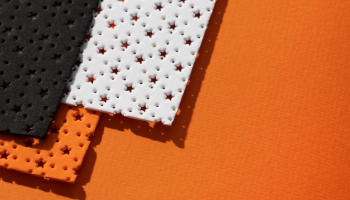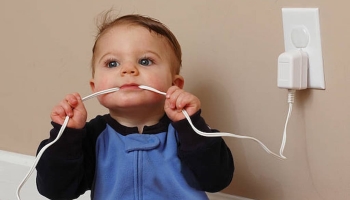
Breastfeeding is a natural and essential way of providing nutrients to a newborn baby. However, it can be challenging for some mothers, especially when their baby keeps pulling off the breast and relatching. This behavior can be frustrating and confusing for new mothers who are trying to establish a breastfeeding routine.
There are several reasons why a baby may keep pulling off the breast and relatching. One common reason is that they are not latching on correctly, which can cause discomfort or pain for both the baby and the mother. Another reason could be that the baby is experiencing gas or reflux, which can make it difficult for them to stay latched on for an extended period.
If you are experiencing this issue, it is essential to seek help from a lactation consultant or a healthcare professional. They can help you identify the cause of the problem and provide you with strategies to overcome it. With patience and persistence, you can establish a successful breastfeeding routine and provide your baby with the nutrients they need to grow and thrive.
Understanding the Basics

Breastfeeding is a natural and healthy way to nourish a baby, but it can also be a challenging experience for new mothers. One common issue that many mothers face is when their baby keeps pulling off the breast and relatching frequently. This can be frustrating and painful for the mother, and it can also make it difficult for the baby to get enough milk.
There are several reasons why a baby may pull off the breast and relatch frequently. One common reason for baby latching and unlatching repeatedly is that the baby is not latching properly. When a baby latches onto the breast, they should take in a large portion of the areola, not just the nipple. If the baby is only latching onto the nipple, it can be painful for the mother and the baby may not be getting enough milk.
Another reason why a baby may pull off the breast and relatch frequently is that they are experiencing discomfort or pain. This can be caused by a variety of factors, including teething, an ear infection, or a cold. If the baby is experiencing discomfort or pain, they may be more likely to pull off the breast and relatch frequently.
It is also possible that the baby is simply not hungry or is feeling full. Babies have small stomachs and may need to feed frequently, but they may also become full quickly and need to take a break. If the baby is not hungry or is feeling full, they may pull off the breast and relatch frequently.
Common Reasons for Pulling Off and Relatching

Breastfeeding can be a challenging experience for both the mother and the baby. One common issue that mothers face is when their baby keeps pulling off the breast and relatching. There are several reasons why this may be happening, and it’s important to understand them to ensure a successful breastfeeding journey.
Milk Flow Issues
One of the most common reasons why a baby may pull off and relatch is due to milk flow issues. This can happen when the baby is not getting enough milk or when the milk is flowing too quickly. In the case of low milk or slow flow, the baby may become frustrated and pull off the breast to try and stimulate more milk production. On the other hand, if the milk is flowing too quickly, the baby may pull off to catch their breath or avoid choking.
Gassiness and Burping
Another reason why a baby may pull off and relatch is due to gassiness and burping. If the baby has gas, they may become uncomfortable and fussy, making it difficult for them to feed. Burping can also relieve gas pain and discomfort and help the baby continue feeding.
Distractions and Fussing
Babies are easily distracted, and this can often lead to them pulling off the breast and relatching. They may become interested in their surroundings or become fussy and irritable, making it difficult for them to focus on feeding.
Growth Spurts and Cluster Feeding
During growth spurts, babies may become hungrier than usual, leading to more frequent feeding. Cluster feeding, where the baby feeds from one breast multiple times in a short period, can also occur during growth spurts. This can lead to the baby pulling off and relatching as they try to get more milk.
Lip Tie and Tongue Tie
Lip tie and tongue tie are conditions where the baby’s lip or tongue is attached too tightly to their mouth, making it difficult for them to breastfeed. This can lead to poor latching, which can cause the baby to pull off and relatch frequently.
In summary, there are several reasons why a baby may pull off and relatch during breastfeeding. These include milk flow issues, gassiness and burping, distractions and fussing, growth spurts and cluster feeding, and lip tie and tongue tie. It’s important to identify the cause of the issue and address it to ensure a successful breastfeeding journey.
Signs of Proper Latching
When a baby is properly latched onto the breast, it is a comfortable and effective way to nurse. Here are some signs to look for to ensure that your baby is latching correctly:
- The baby’s mouth is wide open with their lips flanged outwards.
- The baby’s chin is pressed into the breast, with their nose and mouth free to breathe.
- The baby’s tongue is positioned under the breast, with the nipple pointing towards the roof of their mouth.
- The baby’s cheeks are rounded, rather than dimpled or sucked in.
- The baby is actively sucking and swallowing, with a rhythmic pattern of pauses and sucks.
If the baby is not latched properly, they may pull off the breast frequently and relatch. This can be frustrating for both the baby and the mother, and can make nursing uncomfortable or painful. It can also lead to poor milk transfer, which can affect the baby’s growth and development.
If you are having trouble with your baby latching on, it can be helpful to seek support from a lactation consultant or other breastfeeding professional. They can help you identify any issues and provide guidance on how to improve your baby’s latch. With proper positioning and technique, nursing can be a comfortable and rewarding experience for both you and your baby.
Breastfeeding Positions and Techniques
Breastfeeding can be a challenge, especially for new mothers. One common issue that mothers face is when their baby keeps pulling off the breast and relatching. This can be frustrating and lead to discomfort for both the mother and baby. However, there are various techniques and positions that can help alleviate this problem.
Reclined Position
One position that is comfortable for both the mother and baby is the reclined position. This position involves the mother lying back on a bed or couch, with her head and shoulders slightly elevated. The baby’s head is then placed on top of the mother’s chest, facing towards the breast. This position allows gravity to help the baby latch on and stay latched, reducing the likelihood of the baby pulling off.
Breast Compressions
Another technique that can help with a baby who keeps pulling off is breast compressions. This involves the mother using her hand to compress the breast while the baby is latched on. This can help the baby get more milk and reduce frustration, leading to a longer and more successful feeding session.
It’s important to note that finding a comfortable nursing position is crucial for both the mother and baby. Trying out different positions can help find what works best for both parties and can reduce the likelihood of the baby pulling off. Additionally, seeking support from a lactation consultant or breastfeeding support group can provide additional tips and even different breastfeeding positions and techniques to help with breastfeeding success.
Managing Milk Supply
When a baby keeps pulling off the breast and relatching, it can be a sign of low or slow milk flow, or high milk flow. Managing milk supply is crucial to ensure that the baby gets enough milk and the mother’s breasts are not overstimulated.
One way to manage milk supply is to ensure a good letdown. A letdown is the release of milk from the breast. If the baby is not getting a good letdown, they may pull off the breast and relatch repeatedly. To encourage a good letdown, the mother can try breast massage or warm compresses before feeding.
Another way to manage milk supply is to use a breast pump. If the baby is not getting enough milk, the mother can pump after feeding to stimulate milk production. If the baby is getting too much milk, the mother can pump before feeding to reduce milk production.
It is also important to monitor milk supply. If the baby is not gaining weight, the mother may need to increase milk supply. If the baby is gaining weight too quickly, the mother may need to decrease milk supply.
Overall, managing milk supply requires a combination of techniques to ensure that the baby gets enough milk and the mother’s breasts are not overstimulated. By monitoring milk flow, using a breast pump, and ensuring a good letdown, the mother can manage milk supply effectively.
Baby’s Growth and Development

Weight Gain and Milestones
One possible reason why a baby may keep pulling off the breast and relatching is because they are going through a growth spurt. During these periods of rapid development, babies may want to nurse more frequently and for longer periods of time. This can help increase their milk intake and promote weight gain.
It is important to keep track of a baby’s weight gain and milestones to ensure they are growing and developing properly. According to the American Academy of Pediatrics, babies usually gain about 1-2 pounds per month during the first 6 months of life and double their birth weight by around 4-6 months of age.
Some common milestones during this time include rolling over, sitting up, crawling, and walking. However, every baby develops at their own pace, and it is important to consult with a pediatrician if there are concerns about a baby’s growth and development.
Wet and Dirty Diapers
Another way to monitor a baby’s growth and development is by keeping track of their wet and dirty diapers. In general, babies should have at least 6-8 wet diapers per day and 3-4 dirty diapers per day during the first few weeks of life. As they get older, the number of dirty diapers may decrease, but the number of wet diapers should remain consistent.
If a baby is not producing enough wet or dirty diapers, it could be a sign of dehydration or other health concerns. It is important to consult with a pediatrician if there are concerns about a baby’s diaper output.
In summary, monitoring a baby’s weight gain, milestones, and diaper output can help ensure they are growing and developing properly. If there are concerns about a baby’s growth and development, it is important to consult with a pediatrician.
When to Consult a Pediatrician

While it is normal for babies to pull off and relatch during breastfeeding, there are certain situations where it may be necessary to consult a pediatrician. Here are some instances where seeking medical advice is recommended:
Poor Weight Gain
If your baby is frequently pulling off the breast and not feeding for long enough, they may not be getting enough milk. This can lead to poor weight gain, which is a cause for concern. If you notice that your baby is not gaining weight as expected, it is important to consult with a pediatrician to rule out any underlying medical conditions.
Painful Feeding
If you experience pain during breastfeeding, it could be a sign that your baby is not latching properly. This can result in sore nipples, which can make breastfeeding uncomfortable and even painful. If you are experiencing pain during feeding, it is important to consult with a lactation consultant or pediatrician to ensure that your baby is latching correctly.
Fussiness and Irritability
If your baby is frequently pulling off the breast and seems fussy or irritable, it may be a sign of an underlying medical condition. This could include reflux, allergies, or other digestive issues. If your baby keeps pulling off breast and relatching or is showing signs of discomfort during feeding, it is important to consult with a pediatrician to rule out any underlying medical conditions.
Low Milk Supply
If you are experiencing low milk supply, your baby may be pulling off the breast frequently in an attempt to stimulate more milk production. If you are having trouble producing enough milk, it is important to consult with a lactation consultant or pediatrician to determine the best course of action.
In general, if you are concerned about your baby’s feeding habits or overall health, it is always a good idea to consult with a pediatrician. They can provide you with guidance and support to ensure that your baby is getting the care they need.
Alternatives to Breastfeeding

If a baby keeps pulling off the breast and relatching, it can be frustrating for both the baby and the mother. However, there are alternatives to breastfeeding that can provide the baby with the necessary nutrition and comfort.
Pacifiers
Pacifiers can be a useful tool to help soothe a baby who is constantly pulling off the breast. They can also help satisfy a baby’s natural urge to suck. However, it is important to note that pacifiers should not be used as a substitute for nursing breast or for feeding, as they do not provide the necessary nutrition that breast milk or formula does. Additionally, some babies may have trouble transitioning from a pacifier back to the breast, so it is important to use them in moderation.
Pumping
If a baby is having trouble latching or is constantly pulling off the breast, pumping can be a good alternative. Pumping allows the mother to provide breast milk to the baby without having to nurse directly. This can also be helpful for mothers who need to return to work or have other obligations that make breastfeeding difficult. It is important to note that pumping can be time-consuming and may require additional equipment, such as a breast pump and storage containers.
Formula
If breastfeeding is not working out, formula can provide the necessary nutrition for a baby. Formula can be purchased at most grocery stores and comes in a variety of types, including cow’s milk-based, soy-based, and hypoallergenic. It is important to follow the instructions on the formula container and to consult with a pediatrician to ensure that the baby is getting the appropriate nutrition.
Dairy Consumption
Mothers who are unable to breastfeed may also consider consuming dairy products to help increase their milk supply. Dairy products such as milk, cheese, and yogurt contain calcium, which is important for milk production. It is important to note that some babies may have a sensitivity to dairy, so it is important to consult with a pediatrician before consuming dairy products.
Frequently Asked Questions
Why does my baby keep pulling off the breast while feeding?
Babies may pull off the breast for a variety of reasons. They may need to burp, have gas, or be experiencing discomfort from teething. It could also be a sign that they are full and satisfied. In some cases, babies may be distracted by their surroundings or overstimulated.
How can I tell if my baby is getting enough milk?
You can tell if your baby is getting enough milk by monitoring their weight gain, the number of wet and dirty diapers they have, and their overall behavior. If your baby is gaining weight, having regular bowel movements, and seems content after feedings, they are likely getting enough milk.
Is it normal for babies to be fussy at the breast in the evening?
Yes, it is normal for babies to be fussy at the breast in the evening. This is often referred to as “cluster feeding” and can occur when babies are going through growth spurts or trying to increase their milk supply. It can be exhausting for parents, but it typically does not last long.
What are some tips for dealing with a baby who pulls and squirms while breastfeeding?
Some tips for dealing with a baby who pulls and squirms while breastfeeding include finding a comfortable position, offering a pacifier, and taking breaks if needed. You can also try nursing in a quiet, dimly lit room to reduce distractions.
Why does my baby get frantic while breastfeeding?
Babies may get frantic while breastfeeding if they are hungry, uncomfortable, or overstimulated. It could also be a sign that they are going through a growth spurt and need more milk. Try to remain calm and patient, and offer comfort and support to your baby.








